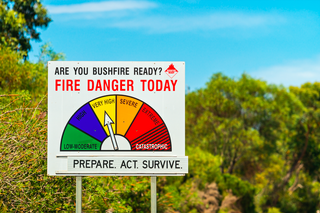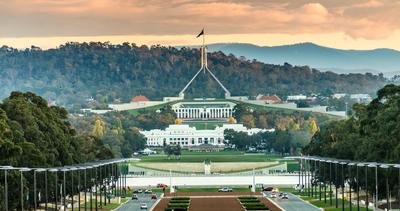Prepare Your Farm for Fire Season


Prepare and protect: fireproof your property for fire season
As we head into February 2021 and fire season approaches, it becomes of utmost importance to take precautions against a fire starting on your property. There’s a much higher chance of a bushfire or grass fire starting as the days grow hotter and windier, and all Australian states are susceptible to bushfire risks, from Victoria to WA. Minimising fire risk factors on your property is vital for protecting both your land and the surrounding environment, so don’t get complacent!
Here are some top tips from Farmbuy.com to prepare for fire season and help you plan to protect your family in case of a fire.
1. Clean up your property
Never neglect your grounds. Some preventative measures to protect against fire are:
- Keep grass shorter than 10 centimetres
- Get rid of any dry grass, fallen leaves or twigs, and loose bark
- Prune shrubs
- Cut back overhanging branches
- Keep shrubs near your home to a minimum
- Clear your gutters of any loose leaves or other debris
- Move your wood pile and any flammable material away from the house, and (if possible) store in flameproof containers
2. Create defence zones
Map out your home in terms of defensible zones, in which each zone is a layer of protection between your house and fire. You can mentally divide your home into three rough zones: immediate, intermediate, and extended.
The immediate zone is within 0 – 2 meters of your home, which is the most vulnerable are and should be the most aggressively maintained. Here, you should repeatedly take the steps mentioned above to ensure there is a minimal risk. You may also want to replace fibre door mats with fire resistant materials and use inorganic mulches – such as stone or gravel – in the garden area under your windows.
The intermediate zone is within 2 – 10 meters of your home, which might include any outbuildings or deck area. The easiest actions to take are to keep your gutters and roof clear of any debris and trim any overhanging branches. Remember to also remove dead plants and any other vegetation that can catch fire from around and under decks.
The extended zone is between 10 – 20 meters of your home, and well beyond that range should you wish it. Cutting grass and removing dead leaves are the main steps to take in this area to keep it fire-safe.
3. Plan for your personal safety
Every year, it is important for you to make an assessment of your property and the fire hazards it poses. Understanding the fire risks is an important step in making a plan that ensures your safety and wellbeing for all situations, including one where a fire does break out. They will help inform your choice as to whether, in case of imminent fire danger to your home and property, you will stay and defend, or leave early.
It is crucial to determine, well in advance of fire season, what will trigger your fire plan and its specifics. If you choose the 'leave early' plan, your fire plan should include where you’ll go, how you'll get there, and what you'll take. Be sure to plan alternate locations in case there is a fire between you and your intended safe haven.
If you choose to 'stay and defend', you will need to bear in mind that this plan requires two able-bodied, fit and determined adults willing to work in dangerous conditions. Reading up on the CFA's Fire Ready Kit and filling out the Bushfire Survival Planning Template are good places to start.
For further information on creating a fire plan, you should carefully read the CFA's Guide to Survival page (or that of the appropriate fire authority for your state, eg. the RFS if you're in NSW.) Get in touch with your local fire station if you need further guidance. Remember to also talk to your family and friends and make these plans together if they are also living on the property with you. Everyone should know what steps to take should a fire danger situation arise.
4. Take part in planned burns
A planned burn is a controlled use of fire under carefully managed conditions to reduce fuels and consequently minimise the impact and spread of bushfire. Reducing fuels lowers the intensity of bushfires and slows their spread, decreases the likelihood of harm from radiant heat, and increases the chance of house survival.
Planned burns are often carried out by fire departments on both public and private land. As a private landowner, you can contact your local brigade and request planned burns, or opt-in to any planned burning arrangements made by your local council. These planned burns are conducted by trained firefighters and occur under very specific weather conditions, so don’t be afraid to take part in them!
5. Stay informed
Check the news every morning to stay up to date on the Fire Danger Ratings and any announcements that may pertain to nearby fires. Understand the warning levels, what they mean, and what you should do so that you and your loved ones can stay safe. It’s our responsibility to stay informed using more than one source of information so that we can take action appropriately.
6. Take longer-term preventative measures
While fire season only lasts for a few months, there are steps you can take all year round to prevent fires starting. In addition to ground maintenance, there are other actions you can take outside the fire season to keep your home and property safe year-round. For example, you can:
- Make sure your fire alarm system is functioning
- Check your home insurance is current and includes coverage in case of fire
- Keep a shovel and a fire extinguisher in an easily accessible place
- Install metal flashing at the edge of your roof and deck
- Replace single pane windows with multi-pane, tempered glass windows
- Practice your evacuation plan
Remember that this is a non-exhaustive list of precautions. Contact your local fire department if you have particular concerns about your area, or what preventative measures would be best for your property specifically. Keep informed and, from all of us at Farmbuy, stay safe this fire season!








